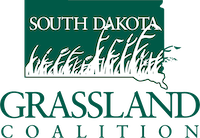
Joshua Dukart
North Dakota Holistic Resource Management trainer, at a recent HRM school in Faith said “our ranching business should be designed to focus on identifying and pursuing opportunities. With whole ranch planning, ranches can be, `opportunity focused businesses`”. Lack of rain is not an opportunity but managing to keep the rain that falls on your land is. By comparing an overgrazed pasture to a pasture managed for soil health, it is possible to have a severe drought on one side of the road and an average year on the other.
